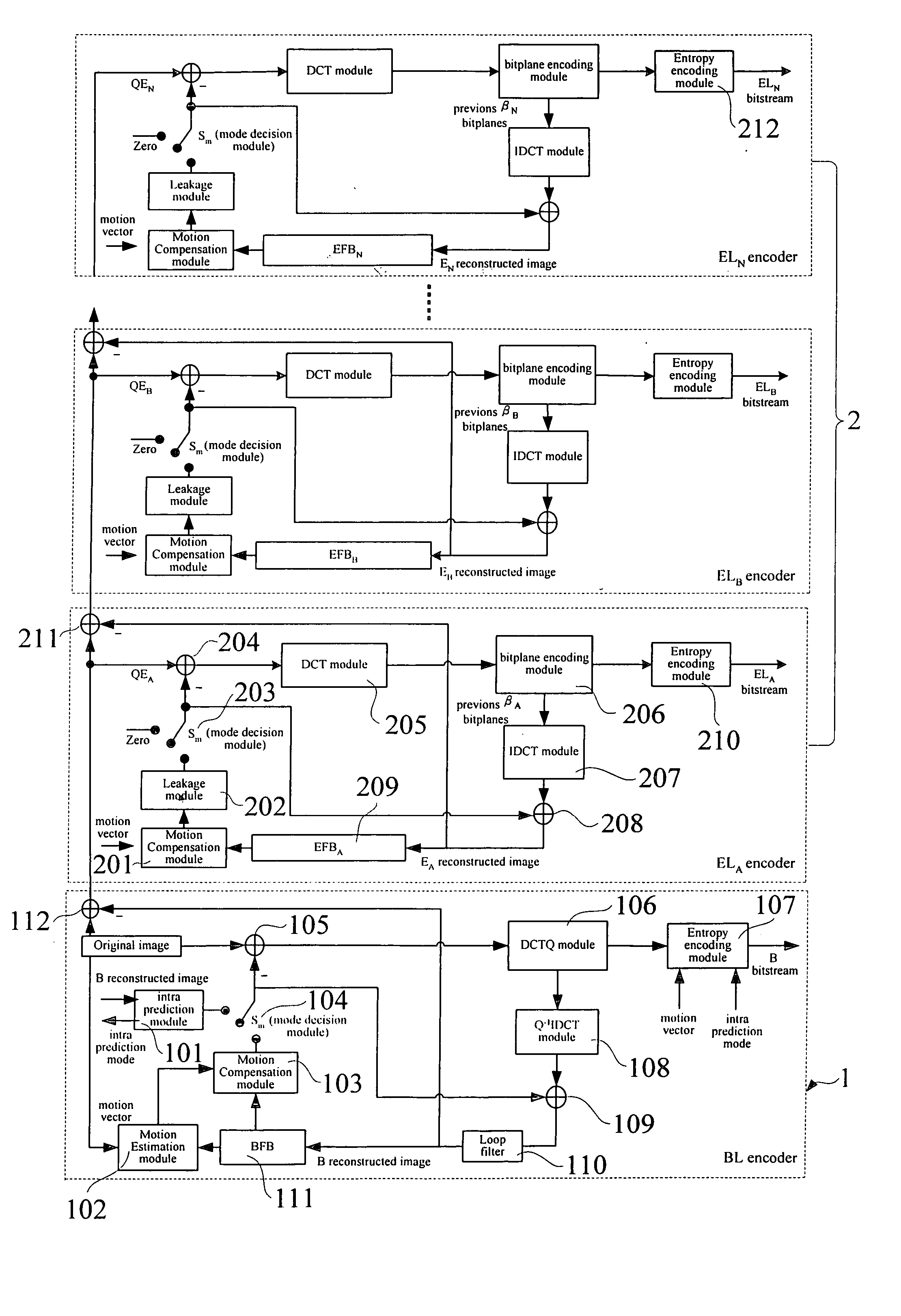Architecture for stack robust fine granularity scalability
a fine granularity and architecture technology, applied in signal generators with optical-mechanical scanning, color televisions with bandwidth reduction, etc., can solve the problems of reducing coding efficiency, poor compression efficiency, and video information may be transmitted over error-prone channels with fluctuating bandwidth and will be consumed, so as to improve compression efficiency and robust error resilience. , the effect of reducing the redundancy
- Summary
- Abstract
- Description
- Claims
- Application Information
AI Technical Summary
Benefits of technology
Problems solved by technology
Method used
Image
Examples
Embodiment Construction
[0032] The following descriptions of the preferred embodiments are provided to understand the features and the structures of the present invention.
[0033] Please refer to FIG. 1 till FIG. 4, wherein FIG. 1 is a diagram of the prediction concept of the SRFGS according to the present invention; FIG. 2 is a diagram of the SRGFS encoder based on stack concept having a base layer of AVC according to the present invention, wherein AVC is one of the newest video compression protocol announced by MPEG committee; FIG. 3 is a diagram of the SRGFS decoder based on stack concept having a base layer of AVC according to the present invention; and FIG. 4 is a diagram of the bitstream format of the SRFGS coding scheme in a frame according to the present invention. Though FIG. 2 and FIG. 3 show the embodiments of SRFGS encoder and decoder based on AVC, the embodiment of a base layer is not limited to be AVC but any coding method using block-based motion estimation to remove temporal redundancy and D...
PUM
 Login to View More
Login to View More Abstract
Description
Claims
Application Information
 Login to View More
Login to View More - R&D
- Intellectual Property
- Life Sciences
- Materials
- Tech Scout
- Unparalleled Data Quality
- Higher Quality Content
- 60% Fewer Hallucinations
Browse by: Latest US Patents, China's latest patents, Technical Efficacy Thesaurus, Application Domain, Technology Topic, Popular Technical Reports.
© 2025 PatSnap. All rights reserved.Legal|Privacy policy|Modern Slavery Act Transparency Statement|Sitemap|About US| Contact US: help@patsnap.com



